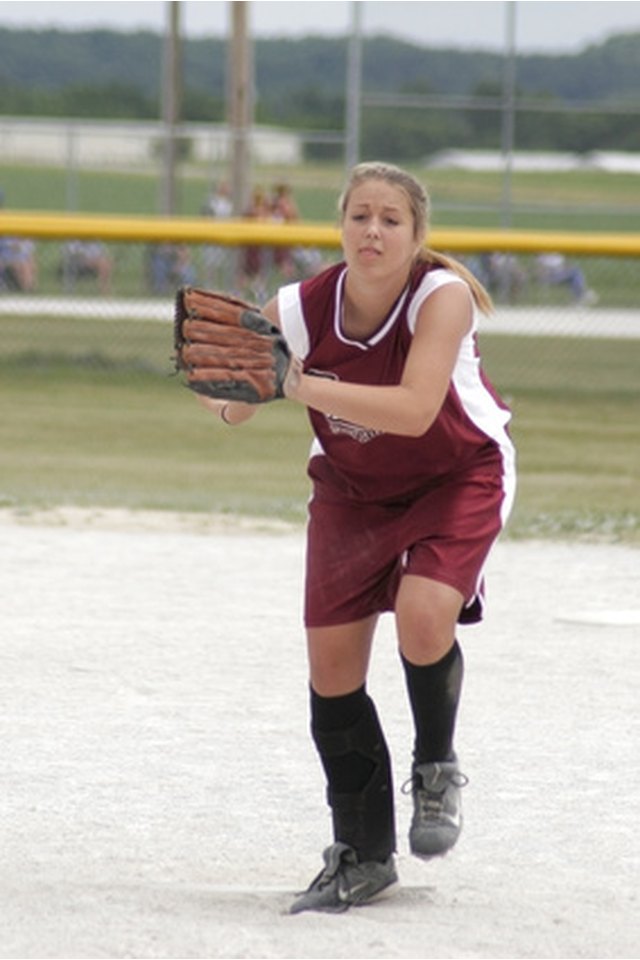ASA Fastpitch Softball Rules

The Amateur Softball Association determines the rules for fastpitch softball in the United States. These rules ensure consistency from team to team and across all leagues, ensuring that the game is fair and consistent wherever it is played. These rules govern the size and makeup of teams, the equipment used, the playing fields and game play.
Players and Positions
Field positions in fastpitch softball total nine. The right fielder, center fielder and left fielder cover the outfield. The infield is covered by the catcher, pitcher, shortstop and three basemen. One baseman each covers the first three bases and the catcher covers home plate. In some leagues, a tenth player can be added to the roster as the designated batter, and replaces the pitcher at bat.
Equipment and Uniforms
A regulation bat for fastpitch softball has a maximum length of 34 inches and weighs no more than 38 ounces. The ball used is covered in a synthetic material or leather, and must have a size of 10 inches, 11 inches or 12 inches to comply with the rules. Helmets must cover the entire head and both ears, and are to be worn at all times by players standing in the batter's box. Players and the coach on a team are required to wear matching uniforms, but the specific style and standards for uniforms are determined by the individual leagues and not by the ASA.
Boundaries and Base Positions
The distance between each base is 60 feet, with the pitcher's mound 46 feet from home plate for men and 43 feet for women. In youth leagues, the pitcher's mound is between 35 and 46 feet from home plate. A fence enclosing the field of play, known as the outfield fence, is placed at a maximum distance of 250 feet from home plate. Markings on the field that define base paths and boundaries cannot be made of corrosive or abrasive materials.
Length of Game Play
The seven innings in a fastpitch softball game lasts the length of time it takes three batters to strike out on each team. The ASA rules allow for extra innings to be played in the event of a tie at the end of the seventh inning. In the event of extra innings, each inning will be played in full until an inning ends with one team ahead of the other by one or more runs. Most leagues consider a team to be the winner if it scores a large number of runs by a certain inning. When this happens, the game ends early. The number of runs needed for this to happen is determined by the individual league.
References
Writer Bio
Rob Callahan lives in Minneapolis, where he covers style, culture and the arts for Vita.MN and "l'étoile Magazine." His work has earned awards in the fields of journalism, social media and the arts. Callahan graduated from Saint Cloud State University in 2001 with a Bachelor's degree in philosophy.
